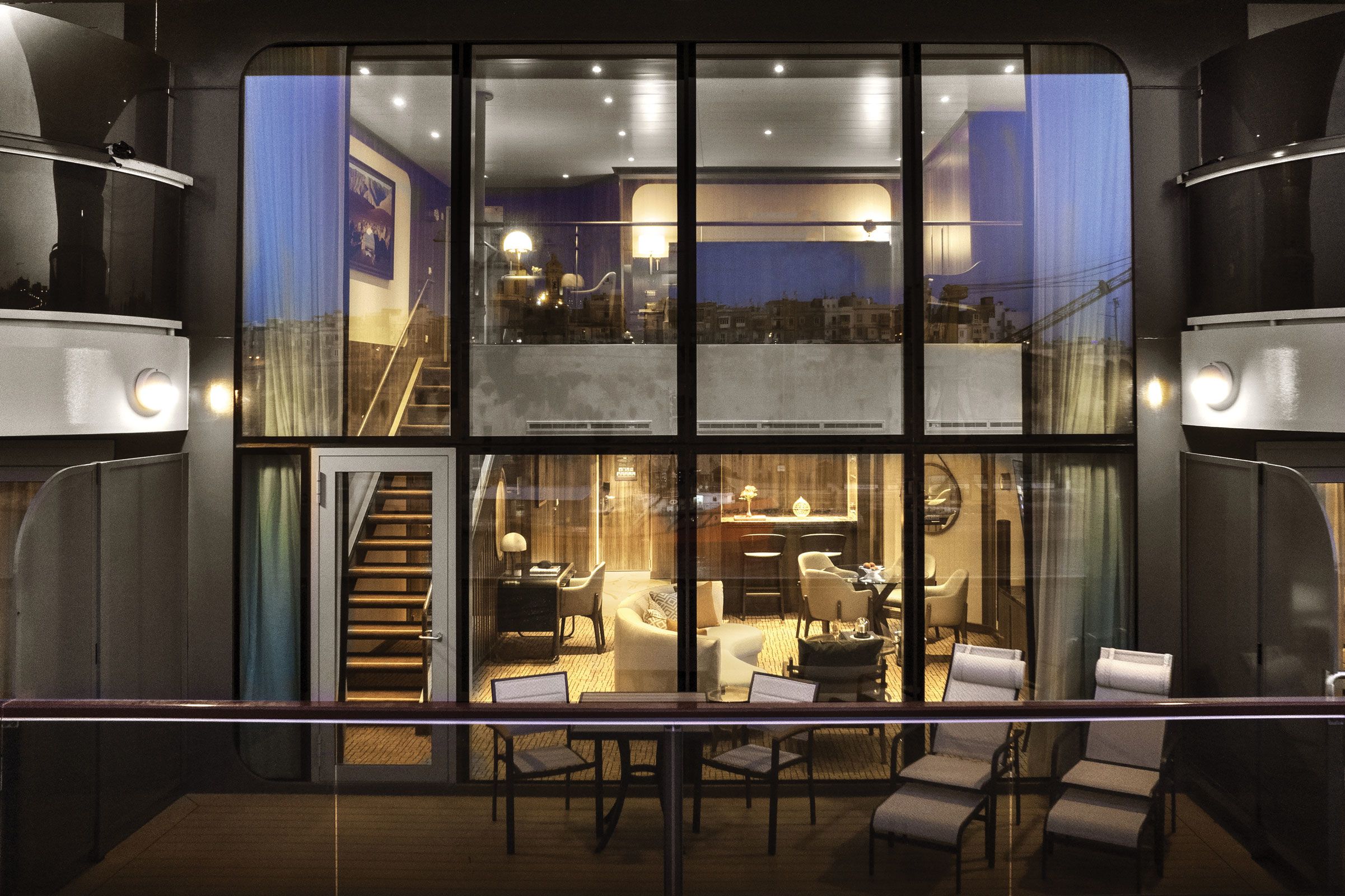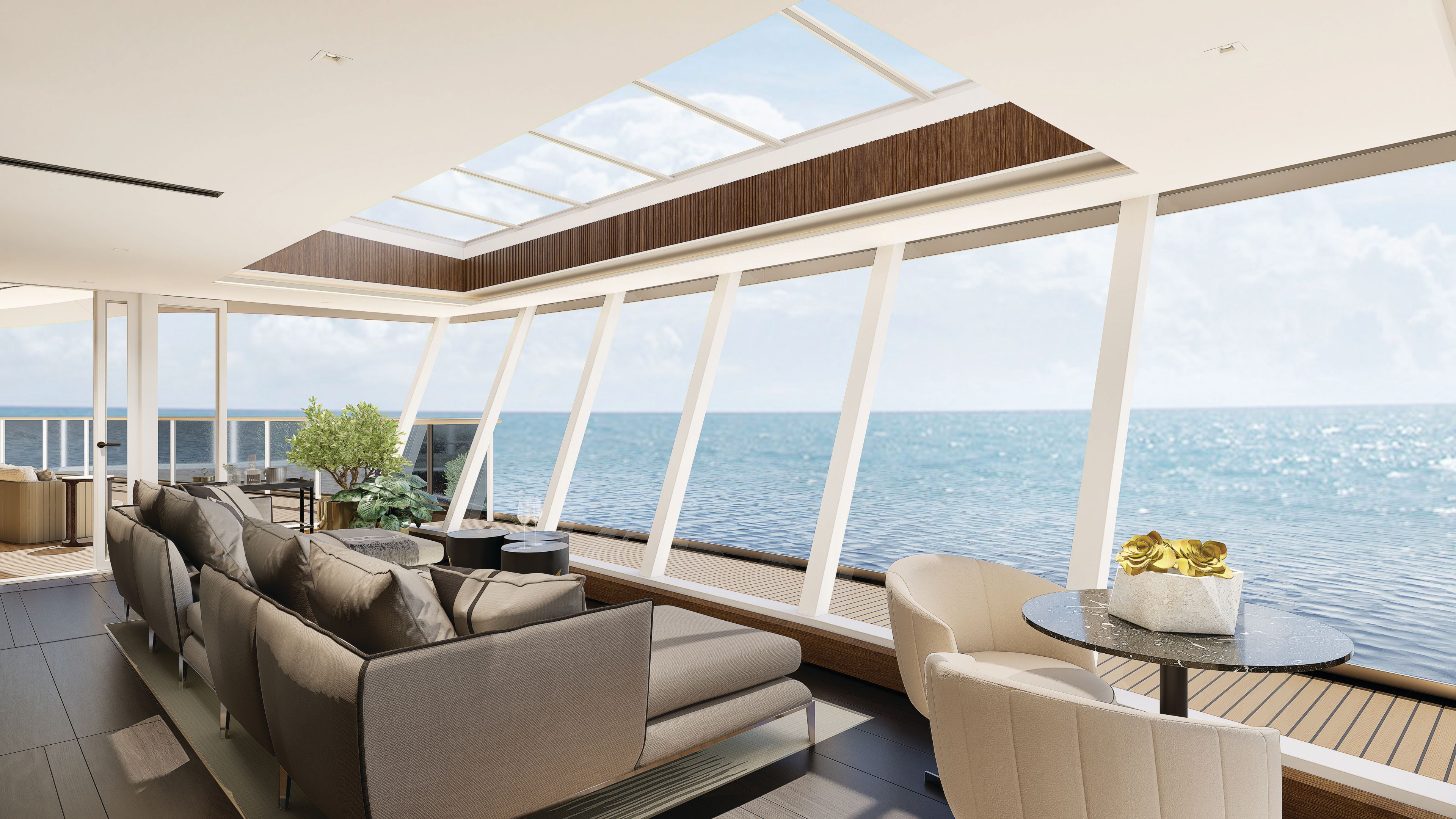The world’s wealthiest cruisers possess an insatiable and ever-growing appetite for the largest, most exclusive accommodations available at sea. This demand has spurred a new arms race in the luxury travel sector, where cruise lines are continually designing suites that defy expectation, rivaling the square footage and amenity offerings of land-based mansions. These so-called “megasuites” are rapidly growing in both size and number, forcing travel advisors into high-stakes competition to secure the limited inventory for their elite clients. For many high-net-worth individuals, a suite’s size and level of personalization—complete with private butler service, dining rooms, and custom furnishings—is the non-negotiable standard, serving as the only feasible alternative to chartering a private yacht. The rise of the megasuite signifies a permanent shift in luxury cruising, establishing a top-tier market where the only limit on space and price appears to be the shipyard’s imagination.
The Escalation of Size and Price: A Palatial Proposition
The current trend in cruise accommodation is defined by an astonishing escalation in sheer size, pushing top-tier suites from large apartments into the realm of palatial residences. This growth is best exemplified by the audacious launch of the Skyview Regent Suite on the upcoming Regent Seven Seas Prestige. At nearly 9,000 square feet, the suite will be as large as a mansion on land, featuring extraordinary amenities such as a private gym, an elevator, and a massive 3,703-square-foot wraparound balcony offering panoramic views.

This unprecedented scale comes with an equally extreme price point, establishing a new high-water mark for the industry. The Skyview Regent Suite’s starting rate is $25,000 per night, and despite this cost, demand is ferocious; the suite was booked within one minute of the ship’s sales launch on ten of thirteen itineraries. Other luxury lines follow similar pricing strategies. Explora Journeys’ Owner’s Residences, for example, command between $61,000 to $70,000 for a seven- or eight-day sailing, emphasizing that in the megasuite market, price is a measure of prestige, not a deterrent for the target demographic.
The Megasuite Demographic: Privacy, Prestige, and Family
The clientele for these extraordinary accommodations is a highly defined demographic accustomed to immense space, privacy, and personalized service in their daily lives. The primary guests include entrepreneurs, C-suite executives, and occasional public figures. For this group, the megasuite is not a splurge, but a necessity; they require an experience at sea that is comparable, or even superior, to the comfort of their own residences.
These suites are designed to function like personalized homes, featuring extensive amenities such as dining rooms, large living rooms, walk-in closets, and specialized luxury touches. Explora Journeys’ Owner’s Residence includes a steam room connected to the bathroom, while Regent Suites boast two original Picasso lithographs in their private accommodations. Critically, these guests often travel with extended family or groups of friends who occupy lower-level cabins, using the central megasuite’s spacious dining room as the group’s gathering hub. For recognizable public figures, the seclusion offered by these sprawling, self-contained units—sometimes including private gym equipment and pools—allows them to maintain privacy while still enjoying the social amenities and varied destinations a cruise ship provides.
Designed for Exclusivity: Amenities and Customization
The appeal of the megasuite lies in the combination of massive space and the exceptional customization of included amenities. The services are high-touch and prioritized, including private butler service, priority access to dining reservations, and personalized touches that cater to every whim. The design prioritizes sweeping, private views, often featuring two-story masses of glass that deliver an unparalleled connection to the surrounding seascapes, from Antarctica to the Australian Kimberley.

Specific examples underscore this commitment to exclusivity. The Seabourn Wintergarden Suites feature a glass-enclosed solarium with a tub and daybed. Oceania’s Owner’s Suites provide meticulous luxury, including a comprehensive pillow menu and expansive walk-in closets. For the ultimate luxury traveler, the 4,443-square-foot Regent Suite even boasts a private sauna. Cruise lines are also recognizing the family market within the megasuite demographic, with contemporary lines like Royal Caribbean offering specialized options like the three-story Ultimate Family Townhouse, catering to high-net-worth parents who seek bucket-list experiences for their children without mixing with the general population of the ship.
The Booking Frenzy: A Competitive Landscape for Advisors
Due to the extreme scarcity—often only one or two megasuites are available per ship—booking this inventory has become a highly competitive, high-stakes endeavor for travel advisors. Advisors report that securing these coveted spaces, particularly for highly desirable sailings like world cruises or new ship launches, requires preparation akin to securing high-demand concert tickets, with countdowns and minute-by-minute execution.
The competition is so fierce that some suites, such as the Regent Suites for a world cruise, have a price tag of approximately $1.8 million for the entire itinerary and draw interest even before sales officially open. To meet this demand, cruise lines work directly with top advisors, sometimes providing a slight heads-up regarding a client’s interest, though official blocking is prohibited. Client loyalty to a specific line is also a significant competitive factor, often earning them priority access. When a desired suite is unavailable, advisors must resort to creative strategies, such as booking lower-level accommodations and advising the client to bid to upgrade, though this carries an inherent risk of disappointment.
The Future of Space at Sea: Inventory Growth and Strategy
Recognizing the sustained demand, luxury cruise lines are actively adjusting their shipbuilding strategies to increase the availability of top-tier accommodations. This response is driven by advisor feedback, which indicated that clients traveling together would rather decline a trip than deal with one pair settling for a “second-best” suite.
Instead of merely increasing overall ship capacity, brands are strategically adding more and larger suites while sometimes reducing the number of standard accommodations. Explora Journeys, for instance, opted to double the number of Owner’s Residences on its next four vessels, utilizing the slightly longer size of the Explora III and IV to add the extra space. Similarly, Oceania plans to introduce a new suite category and increase its total suite count, partially by reducing the number of standard verandas. This strategy confirms the industry belief that the high-net-worth market is resilient and insatiable, ensuring that top suites, regardless of the price or size, will almost always be fully booked.




